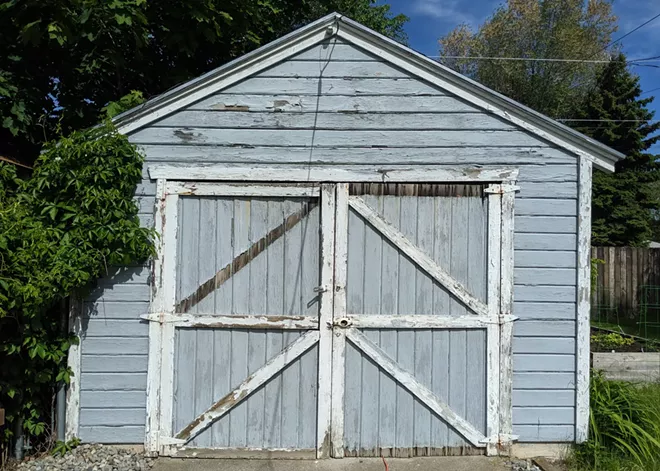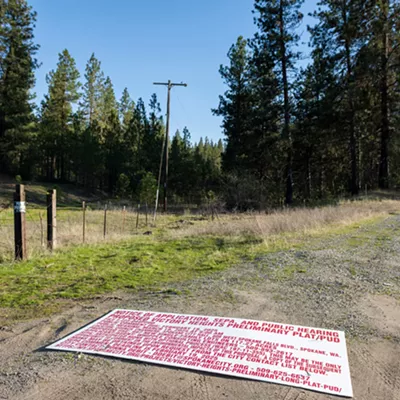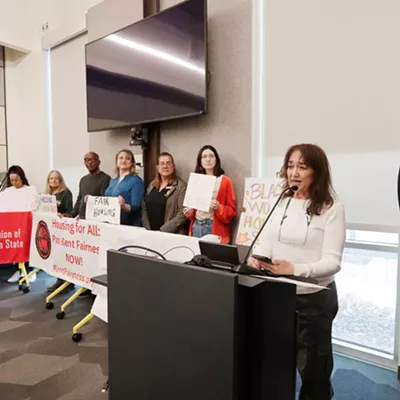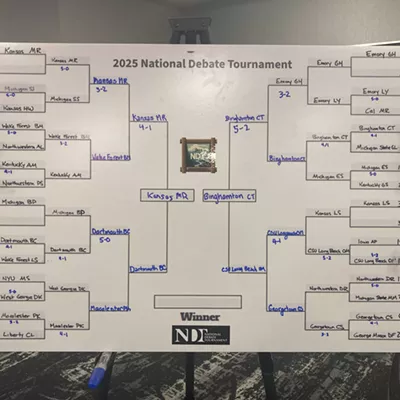Home ought to be a haven. But in thousands of Spokane homes, walls could harbor hazards instead.
In 1978, the U.S. government banned the consumer use of lead paint. But a home built before the ban might still be painted with lead paint, and the likelihood of lead paint increases the older the house is.
According to the Environmental Protection Agency, houses built from 1960 to 1977 have about a 1 in 4 chance of containing lead paint, while those built from 1940 to 1959 have close to a 3 in 4 chance. For those built before 1940, the likelihood increases to almost 90%.
Spokane County has close to 12,000 homes built before 1940. Most of them are concentrated in low-income neighborhoods in downtown Spokane and southeastern Spokane County.
This June, the U.S. Department for Housing and Urban Development (HUD) announced a grant opportunity for cities, counties and tribal governments to pay for lead hazard control reduction efforts for low-income residents.
Spokane County is eligible for anywhere from $1 million to $4 million to eradicate lead paint in old homes, mostly for residents who have children under 6 years old and make 50% to 80% of area median income. Eligible residents may live in rented or owned homes.
In early July, the Board of County Commissioners gave the greenlight to the county's housing and community development team to apply for the HUD grant. The effort is spearheaded by community development program manager Aidan Fritz, who is in discussions with the City of Spokane and community partners like SNAP to identify the highest areas of need in the county.
If Spokane County wins the grant, Fritz and his team will contract professional repainting services after identifying homes for remediation. Getting rid of lead paint can be too dangerous for amateurs.
"If you're going to be stripping the paint, it will definitely be risky," says Pavel Parfilo, an affordable housing program manager with the county who's also involved in the project. "That's where risk [also] comes in — if you're trying to get rid of the paint and then you're spewing it everywhere."
If it stays on the wall, lead paint is essentially harmless. But if the paint starts chipping, deteriorating and getting into the air or piles of dust on window sills and flooring, that's when it can become dangerous.
Lead is especially harmful to young children, who are also the most likely to be playing on the floor and sticking objects in their mouths. According to HUD, "lead exposure at any measurable blood-lead level in children" can have adverse effects.
The EPA says the effects of lead in children can include slowed growth, behavioral and learning problems, lower IQ, anemia, and hyperactivity. Children in lower-income communities are often at a higher risk of lead exposure because families earning lower than the area median income often live in older or more deteriorated homes.
The grant prioritizes remediation efforts for homes built before 1940. The city of Spokane has the majority of pre-1940 homes in the county, with an estimated 10,402 homes built over eight decades ago.
Not all of those homes would be eligible for grant-funded lead hazard control efforts. Federal dollars would be spent on homes inhabited by low-income residents with young children.
A minimum of 65% of the awarded grant would have to be used toward direct remediation efforts, Fritz said in a presentation to the county commissioners. But the remaining 35% could be used for indirect services like temporary relocation, data collection and blood tests for children.
However, the grant would not be able to cover ongoing medical costs, if any were necessary.
Nationally, the average cost for lead remediation is anywhere from $9,000 to $30,000 per house, Fritz said. The number of houses this grant could affect depends on how much the county applies for and how much each remediation costs.
Fritz said he wants to rehab as many homes as possible, but does not want to apply for more money than his team could responsibly oversee.
In 2013, the City of Spokane was audited by HUD's Office of Inspector General after being awarded the largest Lead Hazard Control grant that year in Alaska, Idaho, Oregon and Washington.
The Inspector General reported that the city "failed to ensure cost reasonableness" for four contracts and "did not accurately report the final total expenditure amount, the number of jobs created, and the amount of its vendor payments." The city was asked to clarify its records or return nearly $1.4 million in grant money.
Fritz said the city decided not to apply for this HUD grant. But that decision makes it easier for Fritz and his team, should they be awarded grant money, to coordinate lead remediation efforts in highest need areas across the entire county. In the meantime, if you are concerned about your own home, for now your best bet might be to contact a private lead paint remediator. As the project gains steam, outreach efforts may help you determine whether you are affected. ♦






















